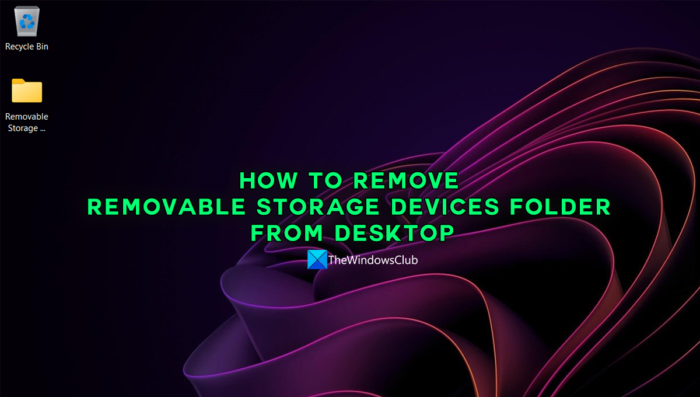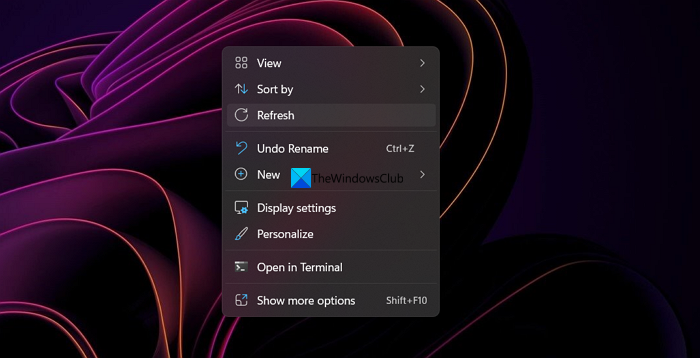Sometimes we see folders that are created on their own on our PC. They might be created by the programs we install or the tools we use. There is no need to panic unless they are created by the malware. There is a Removable Storage Device folder that is appearing suddenly on the desktop of some users. It does not harm but such a folder on a desktop is not a usual thing. You might have created a shortcut for the drive but not a removable storage devices folder. In this guide, we show you different ways to remove the removable storage devices folder from the desktop.

Why is there a Removable Storage Device folder on my desktop?
It appears suddenly on the desktop after you have used a removable storage device on your Windows PC. It mostly appears when you have used the files on the removable storage device on your PC and make changes to them without copying them onto your PC. For example, if you have used photos on a removable storage device and edited them on your PC without copying them, you may see the removable storage device folder on your desktop.
How to remove Removable Storage Devices folder from desktop
If a folder named Removable Storage Devices appears on your desktop and you are wondering how to get rid of it, the following fixes can help you remove it. Any of the below methods can help you fix it.
- Use the Refresh option on desktop
- Restart your PC
- Manually delete the folder
- Use a File Deleter software
- Run a malware scan
Let’s get into the details of each method and delete the Removable Storage Devices folder from Desktop.
1] Use the Refresh option on desktop

When you see the Removable Storage Devices folder on your desktop, you should refresh your desktop and see if it removes the folder. Just right-click on your desktop and select Refresh in the context menu. See if the folder is still there or removed.
Read: Desktop and Taskbar keep refreshing constantly in Windows 11/10
2] Restart your PC
Restarting a device is the most generic fix when we face any issue with it. It works even when you see a removable devices folder on the desktop of your PC. Just close all the programs, eject the removable device (if any), and restart your PC. After the restart check if the folder is gone or not.
Read: Shutdown or Restart Windows without using the mouse cursor
3] Manually delete the folder
If refreshing your desktop or restarting your PC does not work, try to delete the folder manually. You can select the folder and press Delete on the keyboard or use the Shift + Delete buttons to delete it permanently and press Enter to confirm. You can also use the context menu to delete it.
Read: Delete undeletable & locked files, and folders in Windows 11/10
4] Use a File Deleter software
If the Removable Storage Devices folder is still there after trying to manually delete it, you should use a third-party file deleter software to delete it. You can use programs like ForceDelete, ThisisMyFile, Wise Force Delete, or any program of your choice.
5] Run a malware scan
There are some chances that the removable storage devices folder has been created by the malware. We need to eliminate the possibility of it. To do so, you need to run Windows Defender as well as a free malware scan or antivirus program to find and delete such traces. If it is really created by malware, you will see it disappear now.
Read: Managing Files and Folders in Windows 11/10 – Tips & Tricks
These are the different ways using which you can remove the removable storage devices folder from the desktop.
How do I turn off removable storage?
You can turn off removable storage devices on your PC using the Registry Editor, disable USB ports from the Device Manager, disable using Command-line tools, using a third-party program, or using Microsoft Fix It. You can use any of them and turn off removable storage.
Why do I have a removable storage devices folder on my desktop?
There are five different ways to remove the Removable Storage Devices folder from your desktop. For example, you can simply press the F5 button to refresh your computer and remove the corresponding folder immediately. However, if it doesn’t work, you can restart your computer, or delete the folder manually.
Read: Automatically create shortcuts to USB Removable Media on Desktop.
Leave a Reply